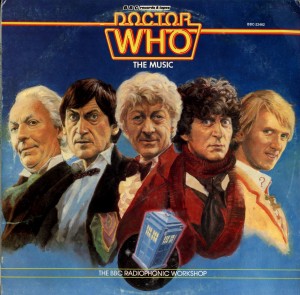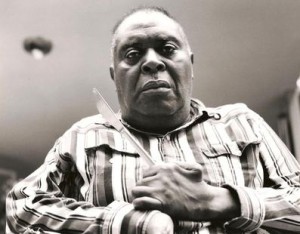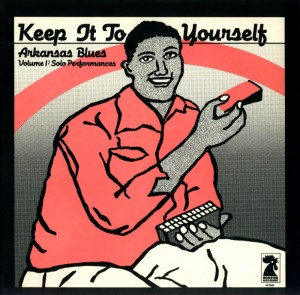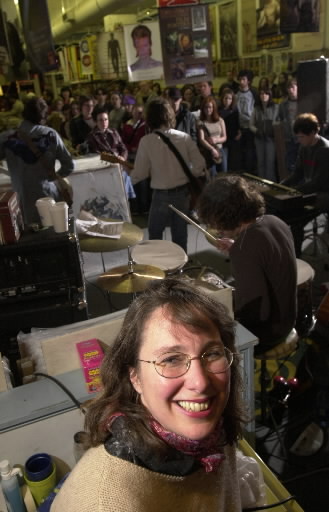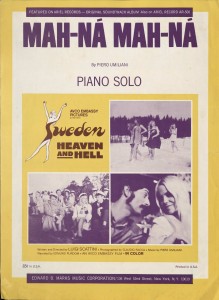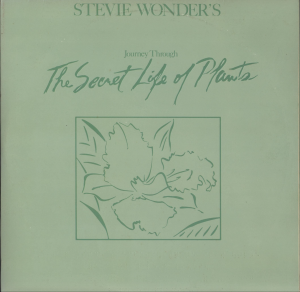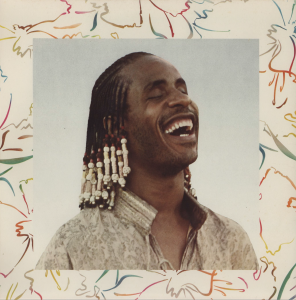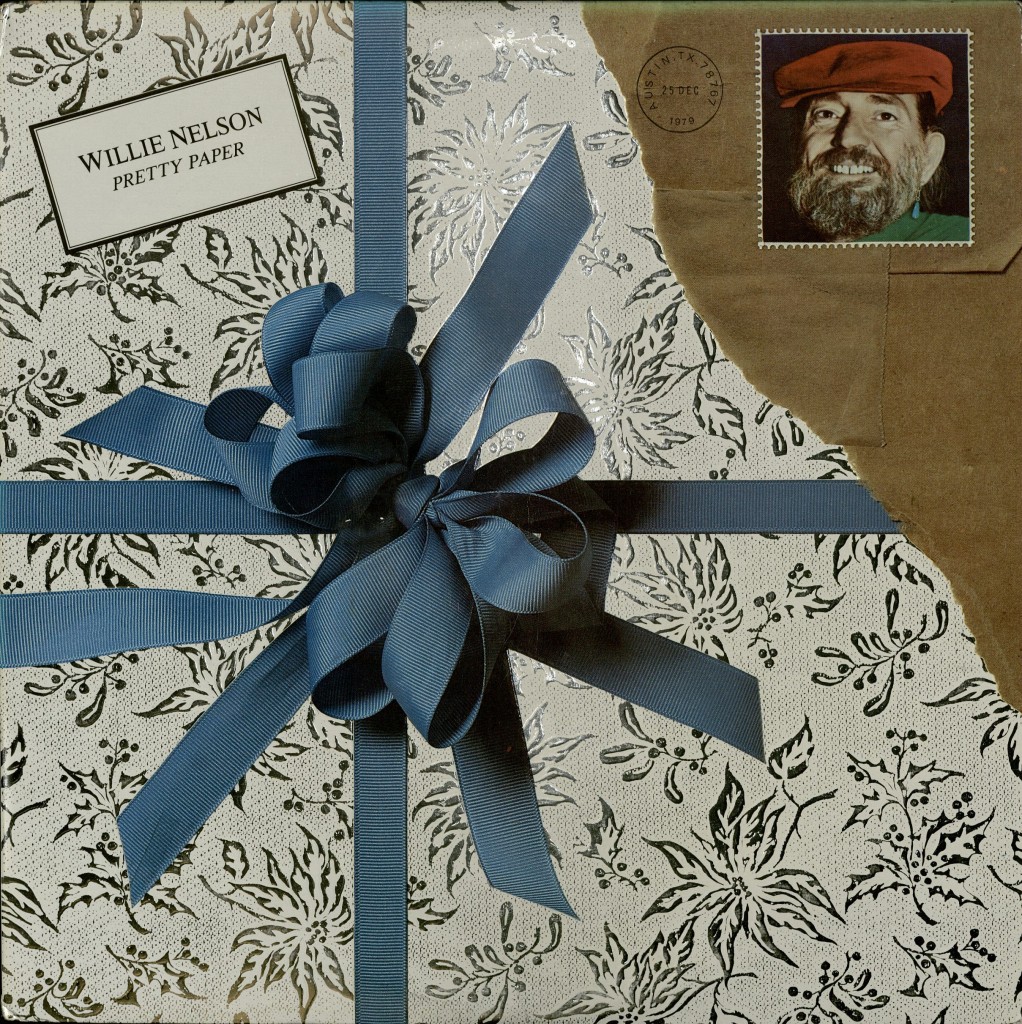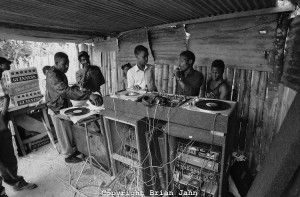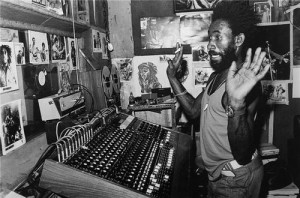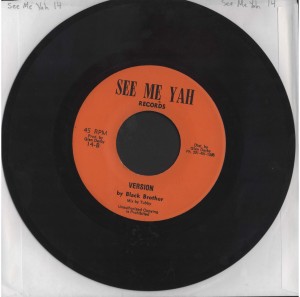
Tim Gillesse
Tim Gillesse, a long-time resident of Lawrence, Kansas and avid reggae enthusiast, made his first of many trips to Jamaica in the early 1970s. During these trips he scoured small record shops and sound studios in Kingston in search of rare reggae 45s and LPs. Upon Mr. Gillesse’s passing in April of 2013, his estate donated nearly 1000 of these recordings to the Marr Sound Archives. Dating from the early 70’s to the late 90’s, the Gillesse Collection of Caribbean Music showcases some rare and exciting moments in the history of the reggae sub-genre known as dub.
The Gillesse collection of 45s varies in origin from famed labels like Duke Reid’s Treasure Isle to lesser known, hand-printed labels like African Museum and Zippy, and features the work of many of the most important and innovative figures in the history of “dub”. The collection of reggae and “dub” records provides an invaluable sonic snapshot of an influential and often overlooked development in the history of not just Caribbean music, but popular music in general.
For a quintessential example of Dub style, compare the Lee Perry produced B-side, “Dub of Parliament” to the Meditations’ original A-side “House of Parliament.” 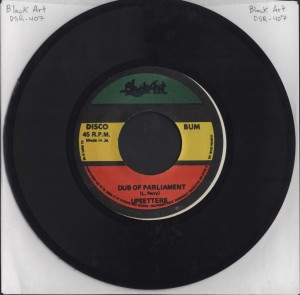
First, listen to the original: [audio:http://info.umkc.edu/specialcollections/wp-content/uploads/2013/11/03-House-of-Parliament.mp3]
Now compare this to the Lee Perry “Dub” version: [audio:http://info.umkc.edu/specialcollections/wp-content/uploads/2013/11/04-Dub-of-Parliament.mp3]
Perry recorded these tracks at his Black Ark Studios, which was well-known as a site of eccentric and experimental techniques, like covering the drum studio in chicken wire, recording and sampling shattering glass, and burying microphones under palm trees.
One of my personal favorites from the collection is Joe Gibbs and Errol T.’s reworking of Ranking Joe’s “Drunken Master” titled “Silver Fox.” 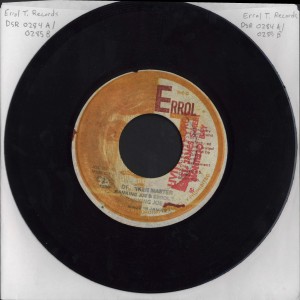
The Original: [audio:http://info.umkc.edu/specialcollections/wp-content/uploads/2013/11/Drunken-Master.mp3|titles=Drunken Master|artists=Ranking Joe and Errol T.]
Joe Gibb and Errol T’s Dub Version: [audio:http://info.umkc.edu/specialcollections/wp-content/uploads/2013/11/Silver-Fox.mp3]
The original song begins with 30 seconds of belligerent, drunken rambling, which in the B-side dub version is spliced up and masterfully reworked into the rhythm track.
Perhaps the most well-known and influential artist in dub was Osbourne “King Tubby” Ruddock. King Tubby is generally credited as the inventor of the “remix” and the man who turned sound engineering into a true art form. 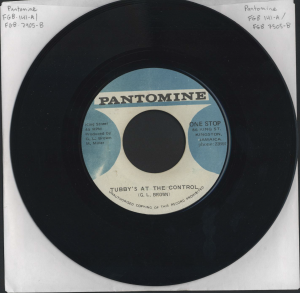 One of the many “Versions” titled “Tubby’s at the Control,” this track produced for the Pantomine label, features signature King Tubby style, reducing the rhythm to a basic drum and bass pattern while splicing in stabs of melodic instrumentation.
One of the many “Versions” titled “Tubby’s at the Control,” this track produced for the Pantomine label, features signature King Tubby style, reducing the rhythm to a basic drum and bass pattern while splicing in stabs of melodic instrumentation.
Tubby’s At the Control: [audio:http://info.umkc.edu/specialcollections/wp-content/uploads/2013/11/09-Tubbys-at-the-Control.mp3]
King Tubby, before his murder in 1989, began focusing most of his energy on managing his 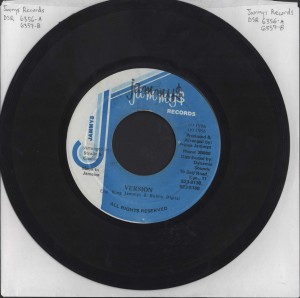 newly built studios and developing his musical protégés, among whom were included “Scientist” and “Prince Jammy” (or depending on the stage of his career “King Jammy”). Prince Jammy is largely credited with ushering in the “dancehall” generation of dub and was an early innovator of using digital and electronic effects. This 1986 “Version” of King Kong’s “Trouble Again” is typical of dub’s turn towards the “ragga” dancehall sound.
newly built studios and developing his musical protégés, among whom were included “Scientist” and “Prince Jammy” (or depending on the stage of his career “King Jammy”). Prince Jammy is largely credited with ushering in the “dancehall” generation of dub and was an early innovator of using digital and electronic effects. This 1986 “Version” of King Kong’s “Trouble Again” is typical of dub’s turn towards the “ragga” dancehall sound.
[audio: http://info.umkc.edu/specialcollections/wp-content/uploads/2013/11/Trouble_Again-Version.mp3|titles=Trouble Again (Version)|artists=Prince Jammy]
Other highlights include dub recordings from such famed labeled as the Hoo-Kim Brothers’ Channel One, Errol T. Records, Ja Man, Impact!, Techniques, Treasure Isle , Bob Marley’s 56 Hope Road studio, famed vocalist Gregory Isaac’s African Museum label, Selector Henry ‘Junjo’ Lawes’ Volcano label (named after his renowned Volcano Sound System), and Sly and Robbie’s label, Taxi Records. It also includes tracks from legendary producers like Coxsone Dodd, Bunny Lee, Augustus Pablo, and many, many more.
With the donation of these records to the Marr Sound Archive, the estate of Tim Gillesse has preserved an important piece of music history and created a valuable resource for scholars, reggae enthusiasts and music lovers in general. While the names of producers like Scientist or King Tubby may not be as recognizable as Tosh or Marley, nevertheless, the influence of their “dub” studio innovations can be seen everywhere in popular music today. These early “dub” records have influenced everything from reggaeton and dancehall to British punk, post-punk and new wave, to the last 30 years of hip-hop, to the entire concept of a remix.
Like this:
Like Loading...
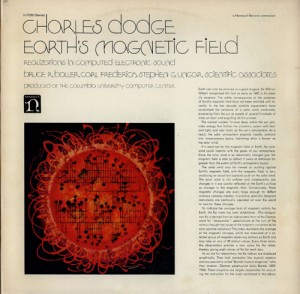 Charles Dodge’s Earth’s Magnetic Field: Realizations in Computed Electronic Sound, was composed in 1970 and was released by Nonesuch. Bell laboratories developed many important technologies that were employed by electronic music composers. A more detailed account of the developments can be found in the annotations of Computer Music, by Nonesuch. One of the first main contributions from Bell labs, in the late 1950’s, was a computer sound synthesis program that could—theoretically—produce any sound. Another main component was the Digital Audio Converters that made it possible to hear the sounds that were being programmed. This translated to the work that was being done at Columbia and Princeton, where composers sought to utilize these developments. Charles Dodge was one of the composers working at Columbia and Princeton that worked also at Bell Laboratories on his music.
Charles Dodge’s Earth’s Magnetic Field: Realizations in Computed Electronic Sound, was composed in 1970 and was released by Nonesuch. Bell laboratories developed many important technologies that were employed by electronic music composers. A more detailed account of the developments can be found in the annotations of Computer Music, by Nonesuch. One of the first main contributions from Bell labs, in the late 1950’s, was a computer sound synthesis program that could—theoretically—produce any sound. Another main component was the Digital Audio Converters that made it possible to hear the sounds that were being programmed. This translated to the work that was being done at Columbia and Princeton, where composers sought to utilize these developments. Charles Dodge was one of the composers working at Columbia and Princeton that worked also at Bell Laboratories on his music.


